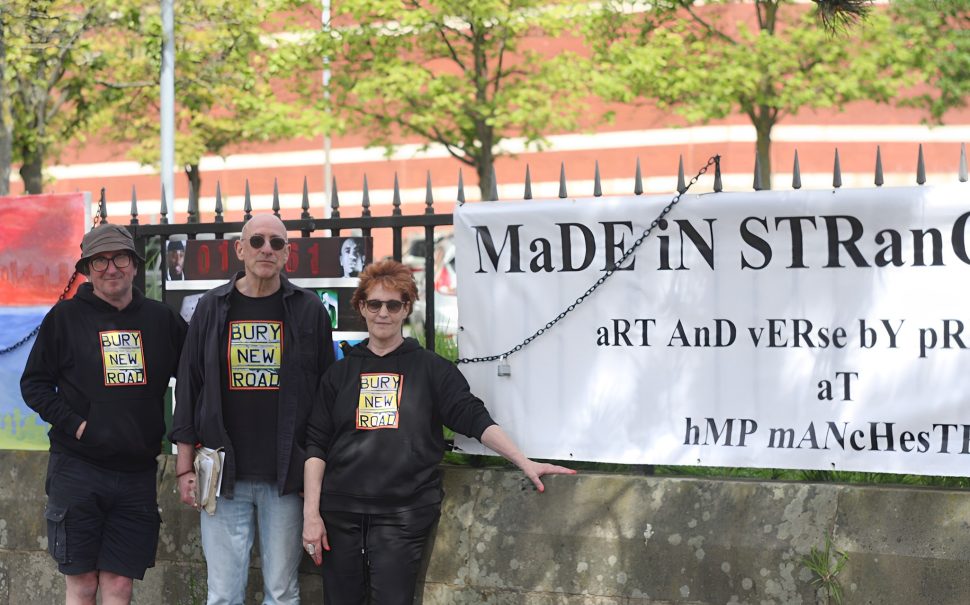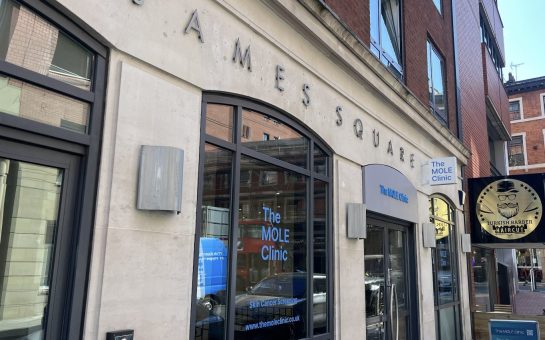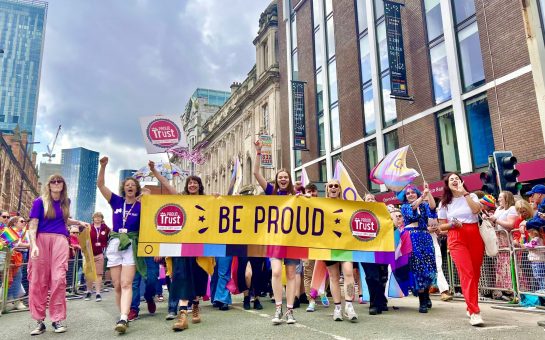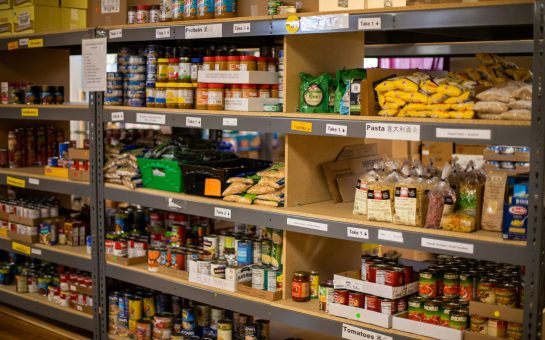In Photos: The ‘Made in Strangeways’ project conducted art sessions with eight prisoners, all serving long sentences at His Majesty’s pleasure, as part of the ‘Bury New Rd’ heritage project. The works respond to the rich cultural history of the area over which the prison looms. MM went to the railings to speak with the organisers.
What do Friedrich Engels, Bugsy Malone, John Cooper Clarke and George Best all have in common?
They all lived on Bury New Road, within 100 yards of HMP Manchester.
‘Bury New Rd’ project facilitator and journalist Stephen Kingston told attendees: “The list is endless.
“Just in this hundred yards: you had Friedrich Engels living here; Boddington’s Brewery; Counterfeit Street over there; John Cooper Clarke used to live over there; George Best used to live just there; Bugsy Malone, who shouts out Bury New Road on his tracks; 10cc; Elkie Brooks; The Fall; Nico from the Velvet Underground…”
And, of course: “The Strangeways Riots, which changed the way that prisoners all over the country were treated.”
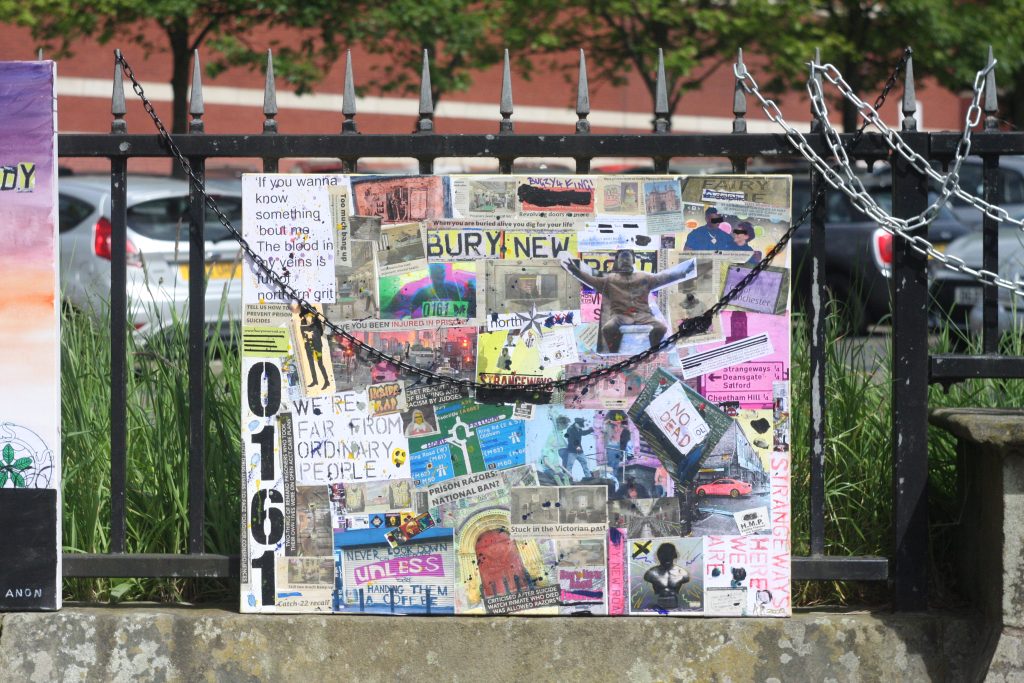
Strangeways Prison was back in the news in April of this year when an inmate climbed onto the roof for a 12-hour protest evocative of the original Strangeways Riots of 1990.
Kingston added: “What we’re trying to do is join the dots of all the amazing things that have happened along this road.”
Organised by the Bury New Road heritage project, the prisoners had six two-hour sessions, which explored the cultural heritage of the area, before getting free rein to create their own responses.
The showing was attended by members of the public, prisoners’ families, various members of the press, and prison officers who took pictures to show to the inmates.
The artworks are featured below:
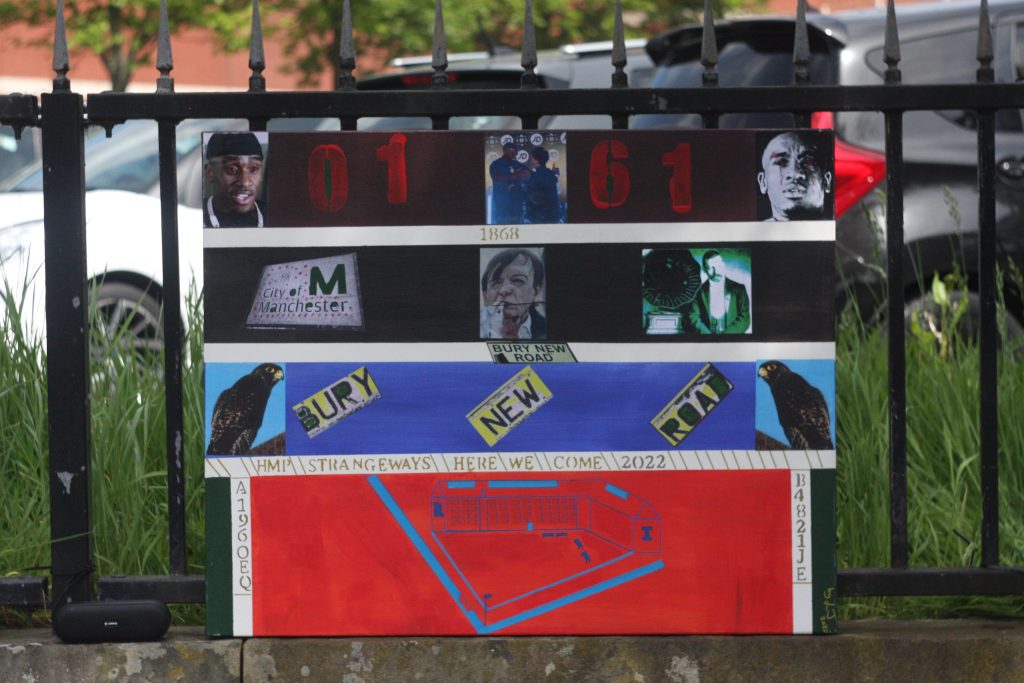
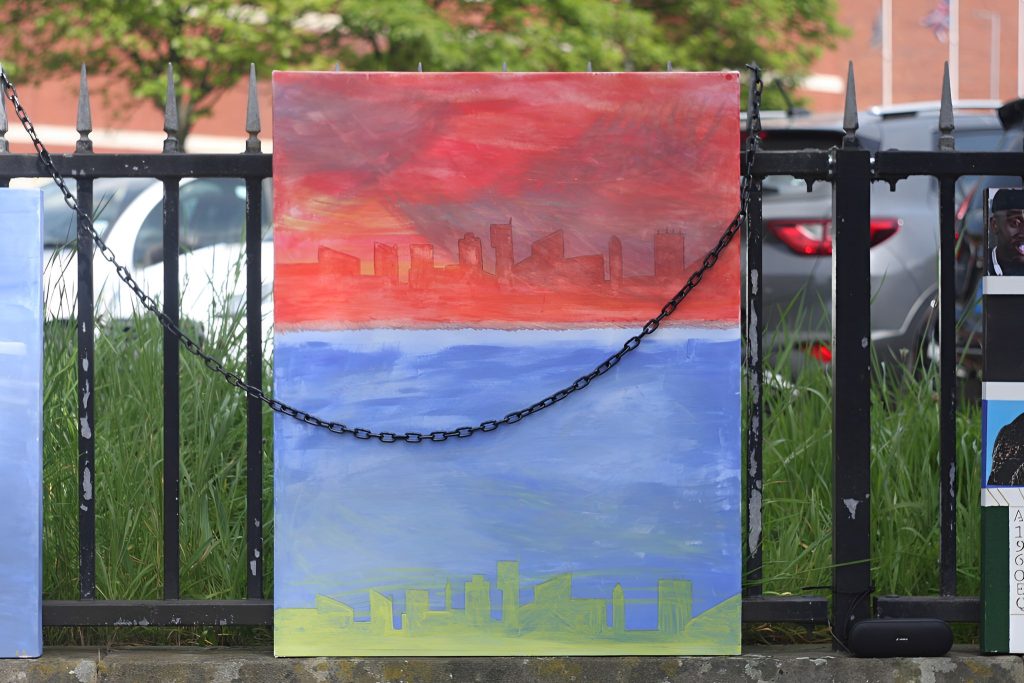
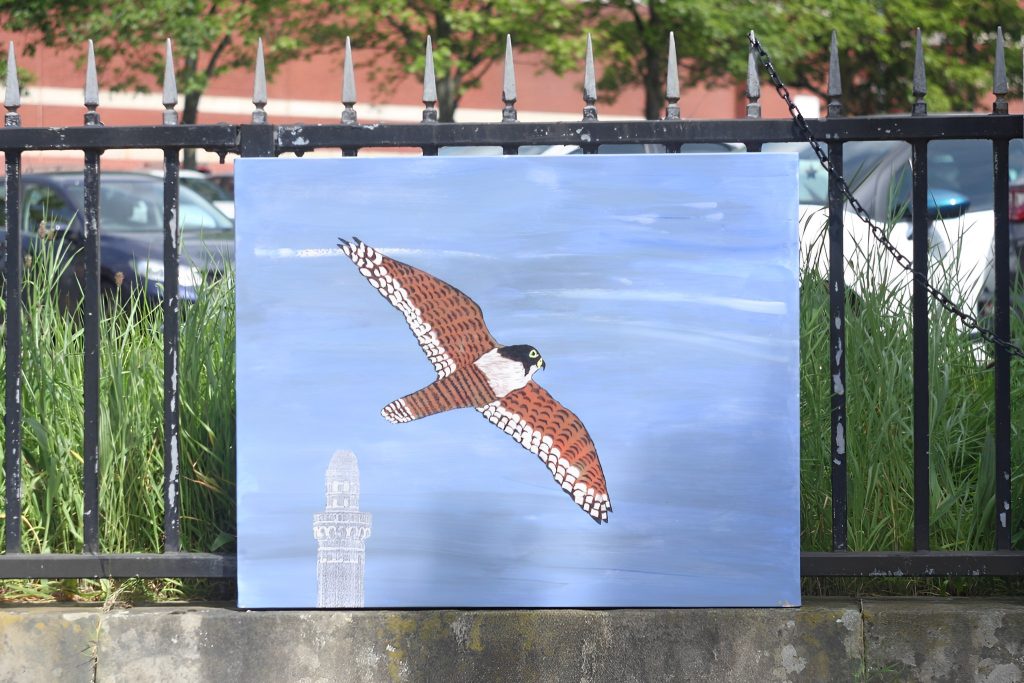
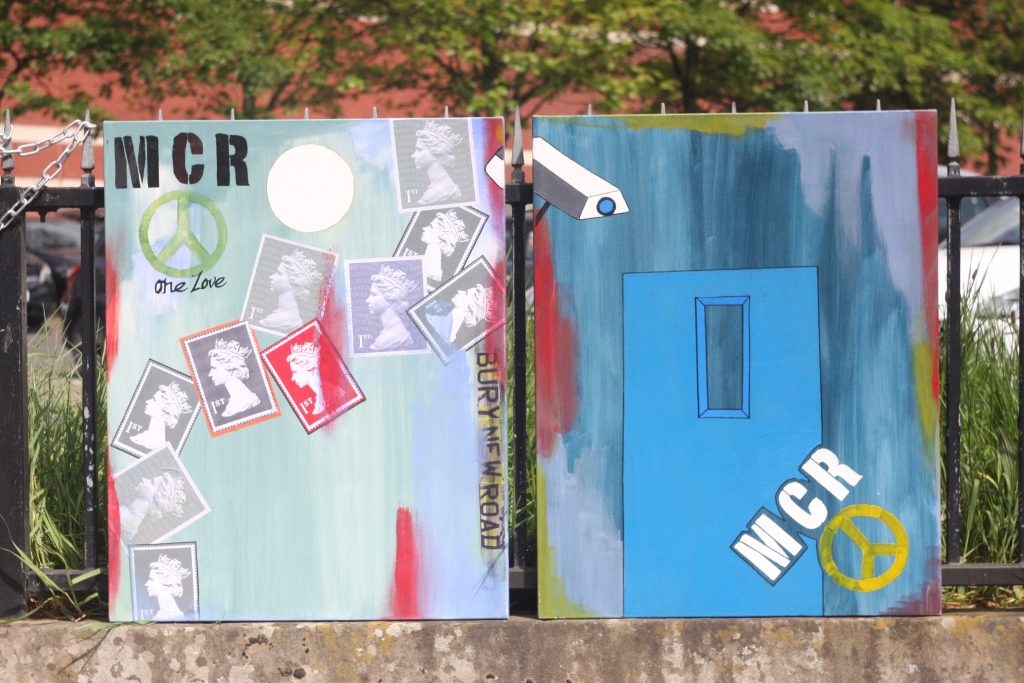
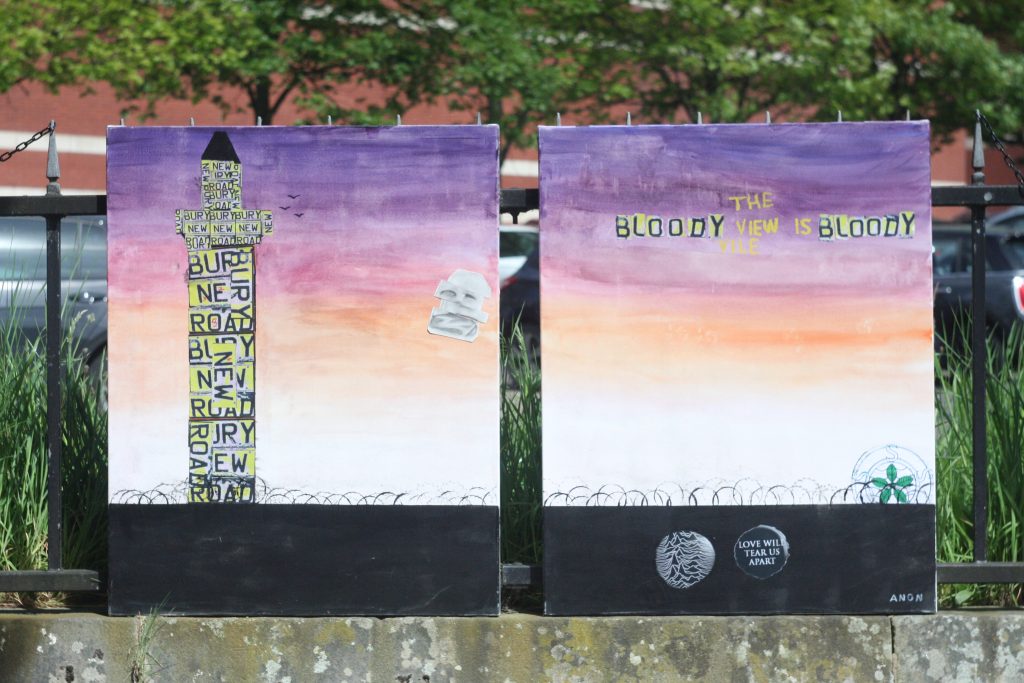
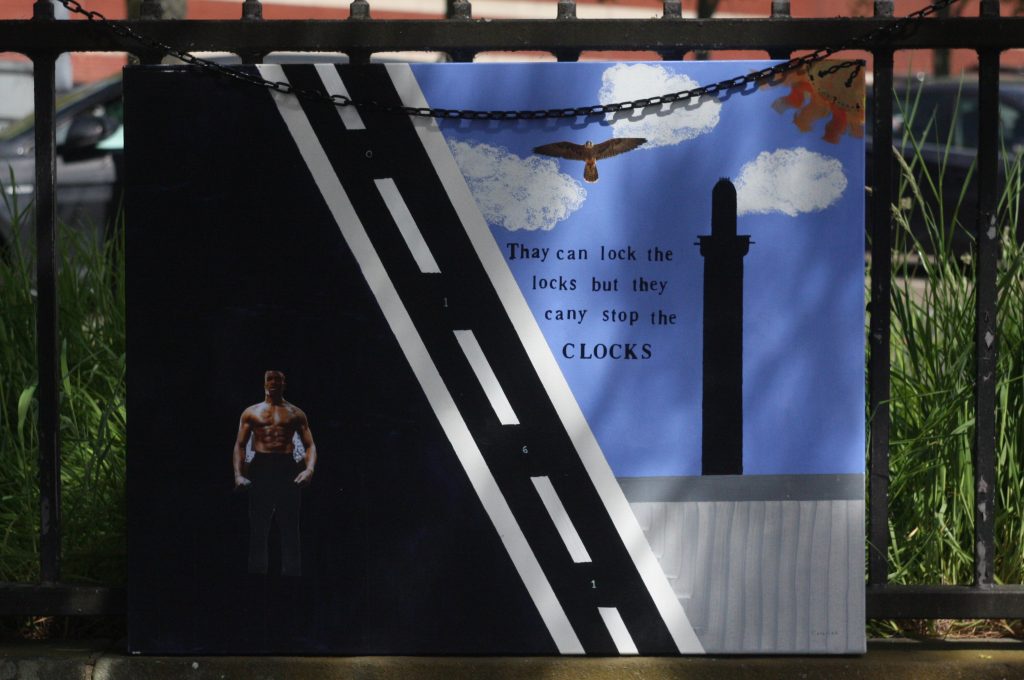
“Once they understood and they trusted us – they really, really got into it,” project facilitator and artist Louise Garman said of working with the prisoners.
“To be honest with you … it was quite upsetting. These guys are in there a long time. And they’re quite young as well. When you really, really start to think about it – they’ve wrecked their lives.
“I know they’ve wrecked the lives of other people – I’m not underestimating that at all. Genuinely. But for them [the prisoners]: they know it. They’re fully aware of what they’ve done. Actually, I think you can see some of that in the paintings.”
Louise pointed out some notable examples: ‘The Screaming Peregrine’, for instance, depicts a falcon that lives and nests in the prison’s tower; a powerful juxtaposition of freedom and the prisoner’s lack thereof.
Louise said: “[The artist-prisoner] looks at her every morning, and her babies – and they’re free, and he is not.”
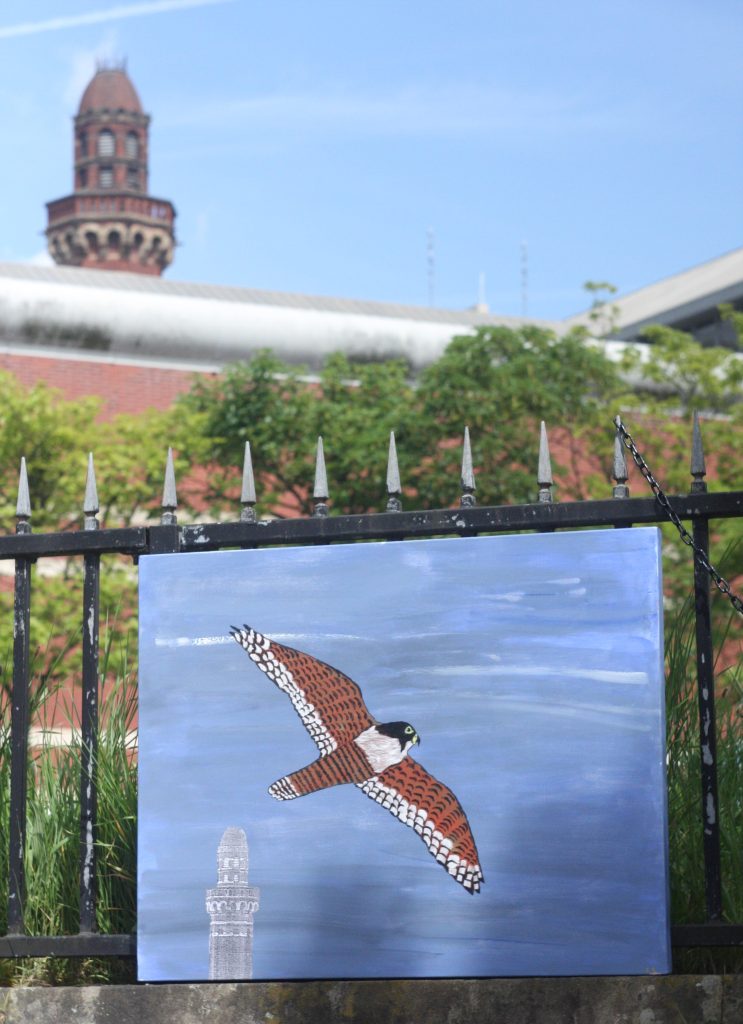
‘A Nation Behind The Door’ – captures the claustrophobia of a life on the inside and the life-line that letters become as a result.
The title could be interpreted to have a dual meaning; a ‘Nation’ beyond the prison door, and those sons-of-a-nation locked inside, ‘behind’ it:
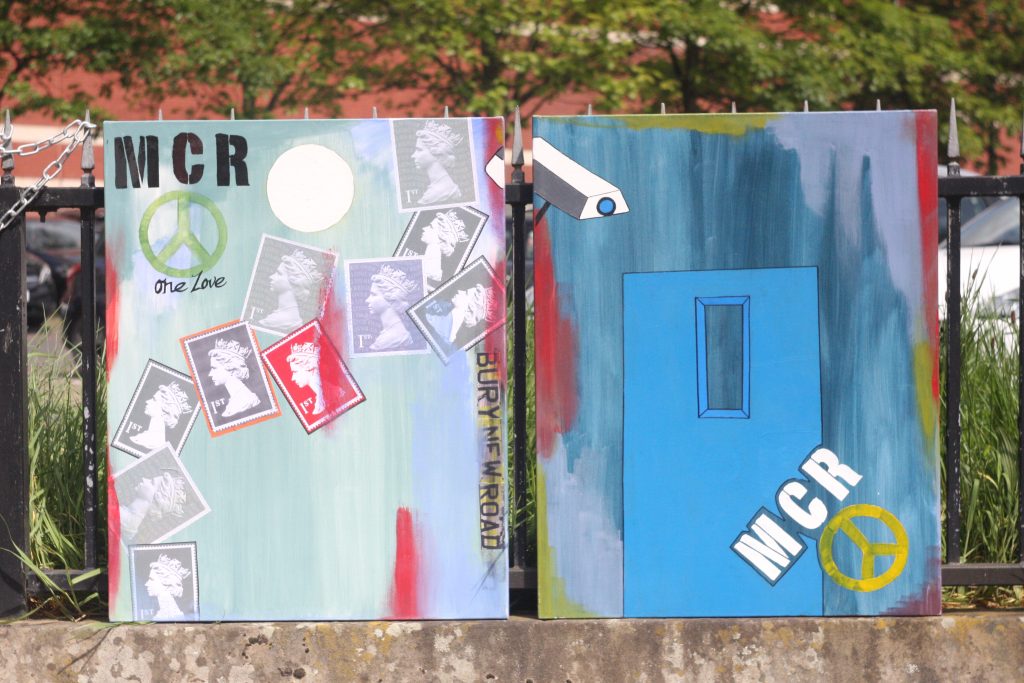
‘Censorship’ – a cryptic collage of intense and frenzied materials, with deep references to the prison and Bury New Road’s history.
The prisoner-artist decided to censor his own materials, rather than leave it entirely to prison procedure:
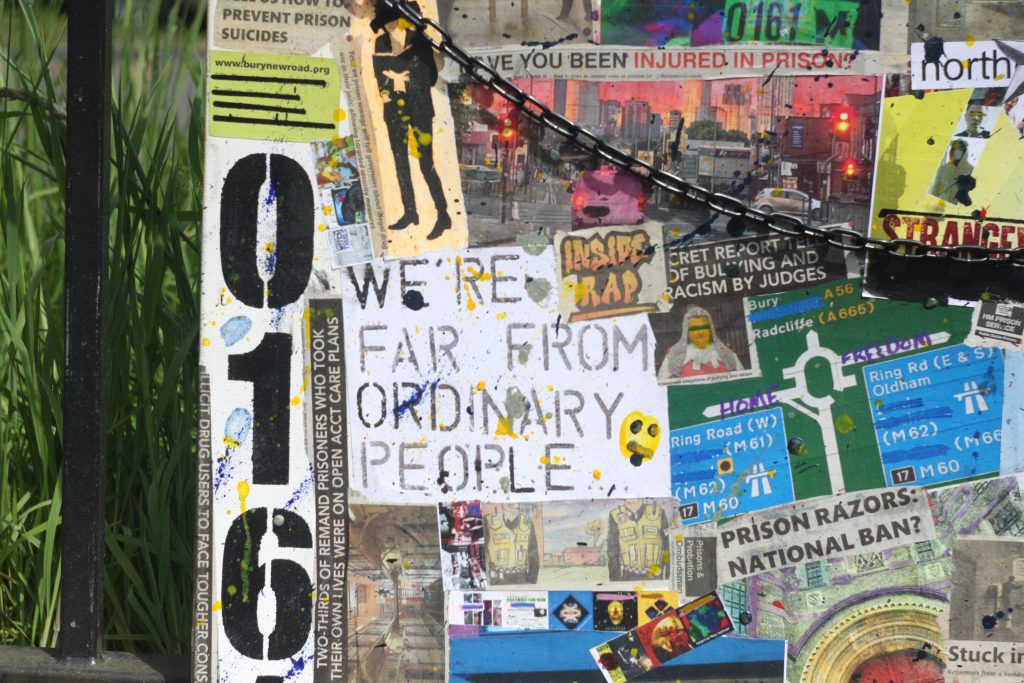
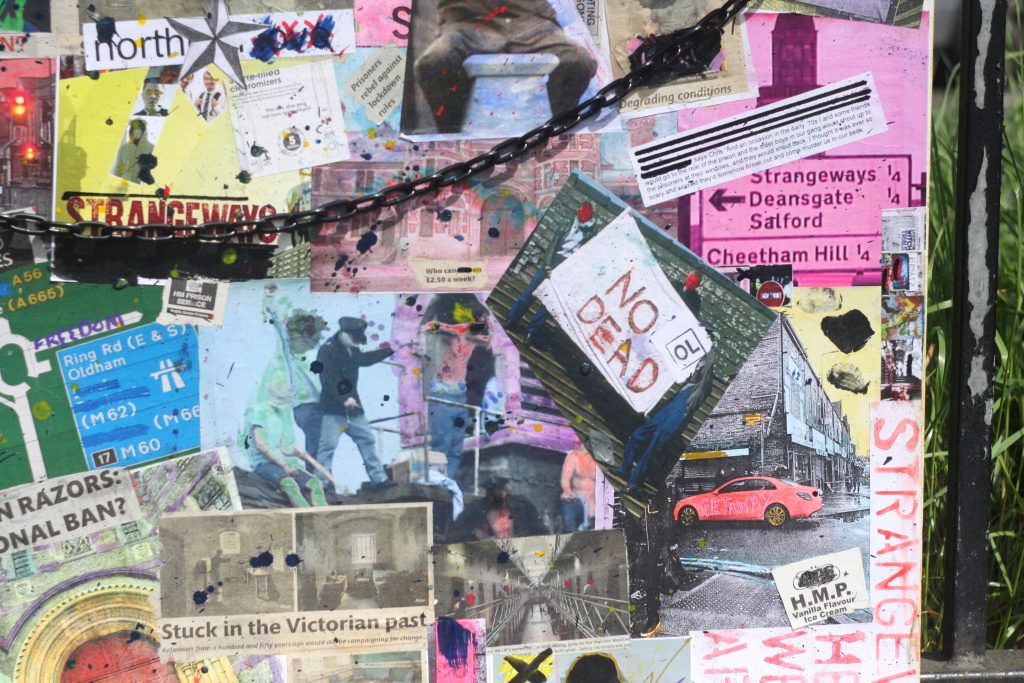
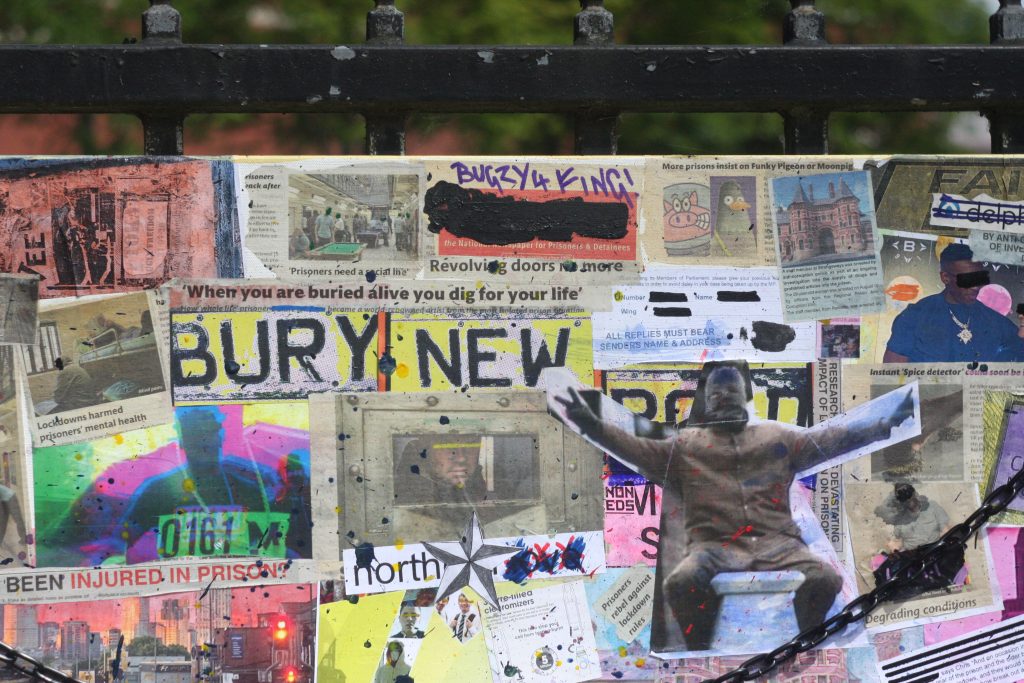
The project took an immense amount of work, much of it organised around security: four months for the organisers’ personal clearance and a further six months to receive the permission to showcase the works on the railings of the prison.
They are currently waiting on 80 ‘Bury New Rd’ t-shirts, made for the prisoners, to be cleared by security.
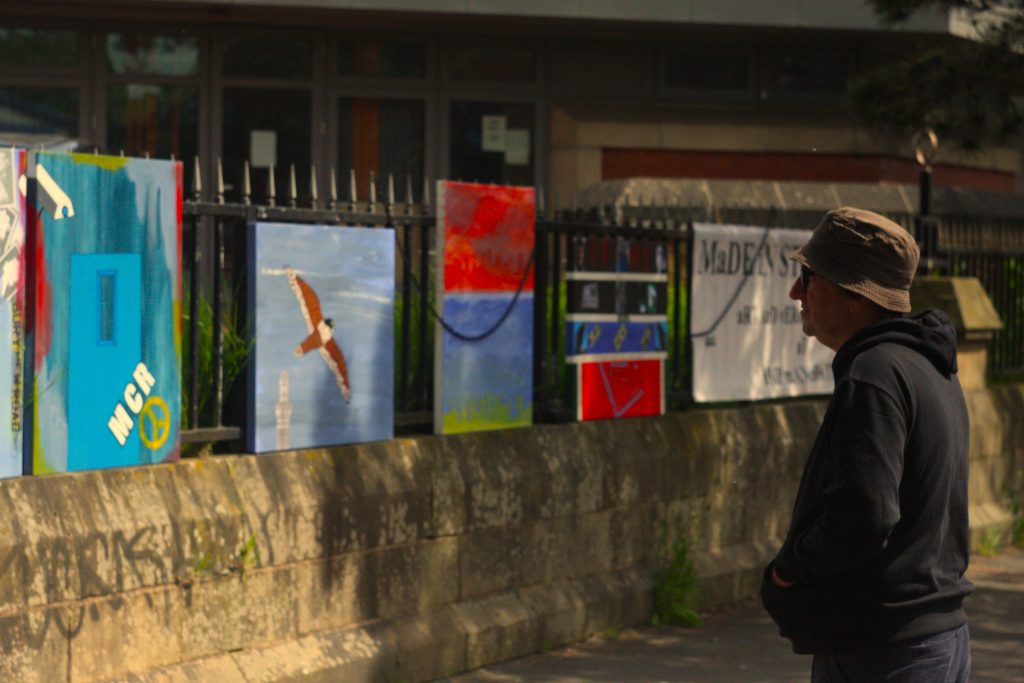
The event saw a variety of attendees including prison staff, who took photos to show the inmates, prisoner’s families, people from the local community and various media organisations.
But who did the project’s organisers really wish would see and experience the work?
“Young offenders”, said Louise.
“It is so easy for us to say, because some of these men have had seriously bad childhoods – but what they [the prisoners] said to us was: ‘Don’t do it.’
“I was chatting to one of them and I said I’d done something ‘spur of the moment’. He said he’d done something ‘spur of the moment’, and now he’s got 30 years.”
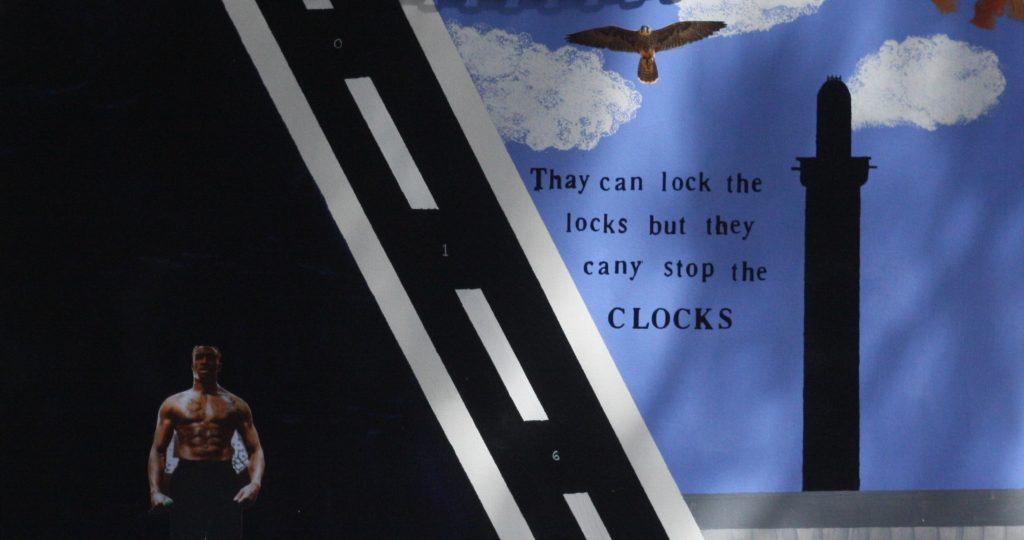
“I think … maybe we’re all capable of stuff,” said Louise.
Maybe more than we’d like to think?
“Yes.”
Capable of doing great harm. And yet, as can be seen in the works of these prisoners, capable of creating something; of creating genuinley reflective art. The dichotomy of man – chained to the railings of HMP Manchester.
The complete details of the heritage project and all their other endeavours can be found here.
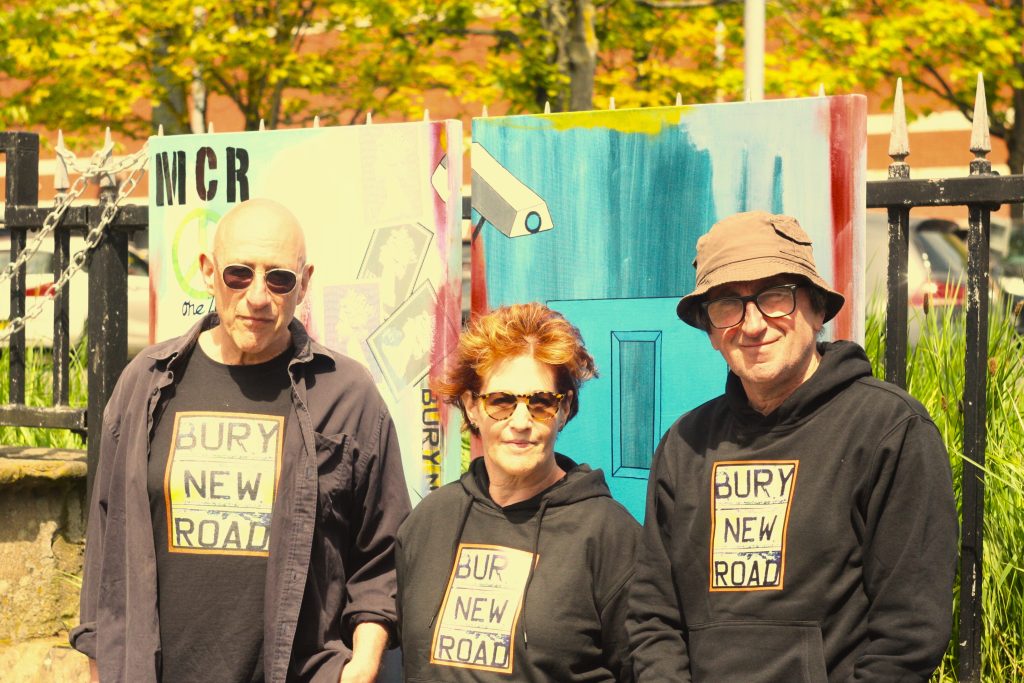
Photos: Tom Farish
